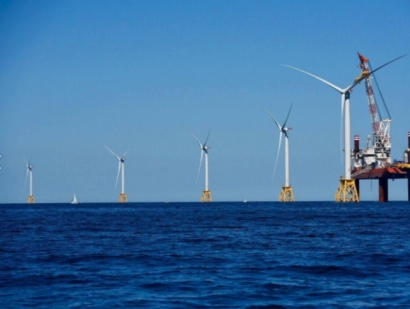
The New York State Energy Research and Development, NYSERDA, hosted the forum, which attracted about 1,500 offshore wind experts, including the Governors and other elected officials from New York, New Jersey and Connecticut.
“We may hit some windy financing turbulence with the loss of tax equities and safe harbor provisions for US and foreign developers of offshore wind,” said Liz Burdock, President and CEO of the Network. “Short-term, financing using safe harbor provisions may have an advantage but, with longer-term financing, a clear and well-defined structure is needed to attract the $60-70 billion investments expected over the coming decade in the U.S.”
The paper, “How Will Offshore Wind Reshape US Project Finance?”, results from discussions with finance experts who propose in the medium term that the construction phase of an offshore wind park may need separate mini-financing tools, dividing up a project’s risks among suppliers, states and financial partners.
Multi-project developers most likely will influence the building of regional supply chains to benefit business clusters under mini-contracts, as well as the sponsoring States.
According to the paper, “States will need to choose and then balance their priorities: price impact on ratepayers versus local job creation.” The State of New York, for example, plans to create 5,000 jobs with its investment of $6 billion for 9,000 MW of energy prior to 2035. At the same time, New York cautions against higher costs for ratepayers.
The white paper also discusses the importance of accuracy in wind resource measurement, as this impacts a project’s financing because each percentage of wind power can decrease or increase millions of dollars in revenues.
Mentioning the different financing mechanisms between U.S. and European lenders, the paper stated, “Europe, which started with 10 banks supporting offshore wind investments, now has approximately 45 banks willing to lend to the offshore wind sector. Further, Europe is witnessing a growing appetite from institutional investors. This not only adds a source of liquidity to the market, but also helps keep the cost of capital competitive. Banks providing debt financing in the US have a preference for a single or very limited number of contractors. The US also has a strong institutional market, but it’s unclear if it has an appetite for offshore wind construction risk.”
As scale in offshore wind is important for building the business case to support local job creation and investment in manufacturing, multi-project developers may be preferred borrowers as they provide ways for financiers to spread the risks. Developers and their financial partners are going to need a pipeline of multiple projects in order to satisfy the state supply chain needs through a regional approach.
Finally, the paper points out the industry and U.S. States view ports with high importance.
Burdock wrote in a Crain’s New York op-ed about East Coast ports’ commitment to offshore wind, “If the ports upgrade their infrastructure and coordinate their efforts, offshore wind could create tens of thousands of jobs along the coast and help the states reach their carbon-emission goals.”

